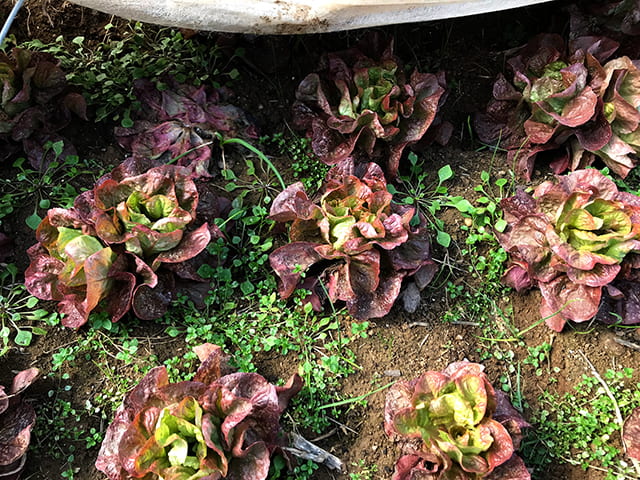This disease occurs commonly but sporadically on Long Island reflecting environmental conditions. It has been observed affecting lettuce growing in fields and in high tunnels (last three photographs below). The pathogen has a very large host range and infects a large diversity of plants including many other crops and also ornamental plants and broadleaf weeds. The disease occurring in lettuce is often called drop, lettuce drop, and Sclerotinia rot. There is another pathogen, S. minor, that causes drop elsewhere.
Symptoms on lettuce start with wilting of lower leaves, then collapse of plants due to decay of crown and tap root with characteristic white fungal growth around the crown and on the underside of lower leaves in contact with soil. This fungal growth appears on the diseased tissues within a few days of infection. After about 10 to 14 days the pathogen (Sclerotinia sclerotiorum) begins producing sclerotia, its survival structure, which are the size of a small dried pea seed. Initially they are white and soft, as shown in some of the photographs below, then they become black and hard. Sclerotia are diagnostic for white mold.
The pathogen can infect in 2 ways. Sclerotia near the soil surface produce apothecia (tiny mushroom-like structures that produce wind-dispersed spores) when there are long periods (more than 4 weeks) of soil moisture near saturation. Spores are produced over 2-3 weeks and infect senescing tissue before invading healthy tissue. Germination of sclerotia is rare but can occur at any time. This also requires moist soil and they need to be near a susceptible plant. The pathogen rarely grows from one plant to infect an adjacent plant.
White mold has also been seen on LI affecting beans, cabbage, lettuce, pepper, and winter squash.
More information:








